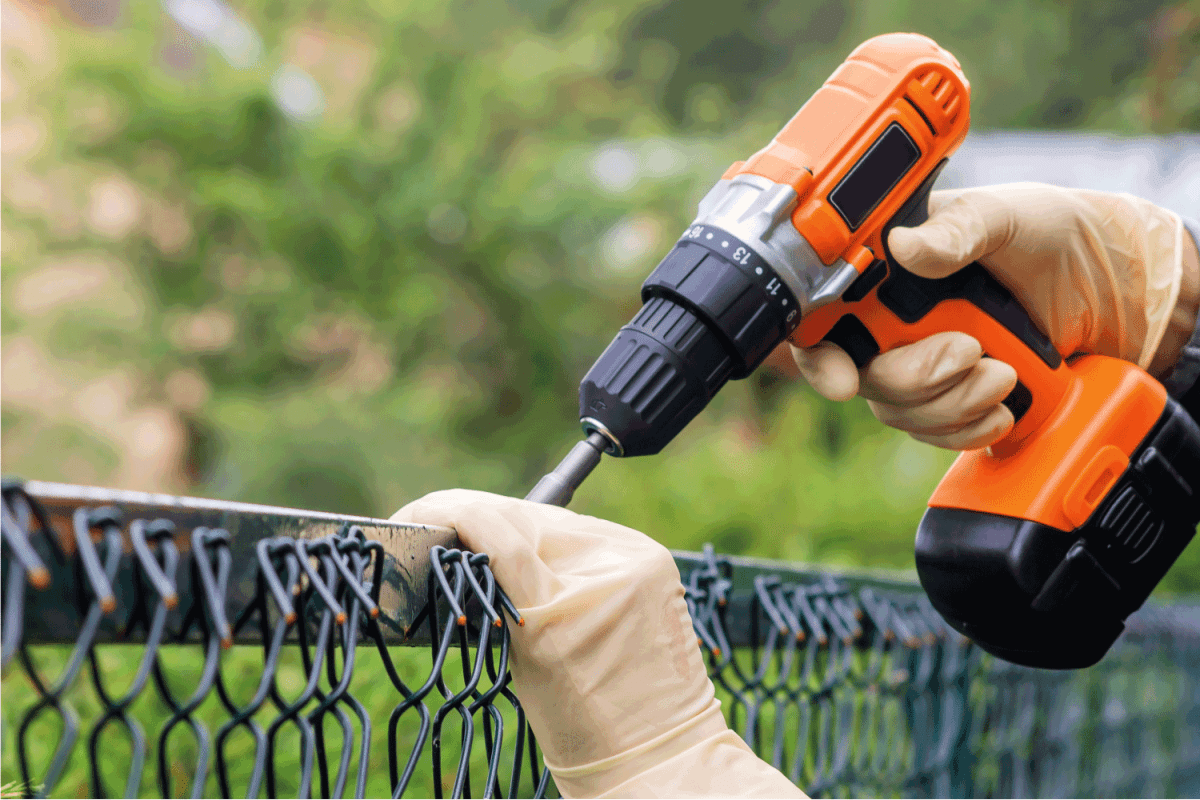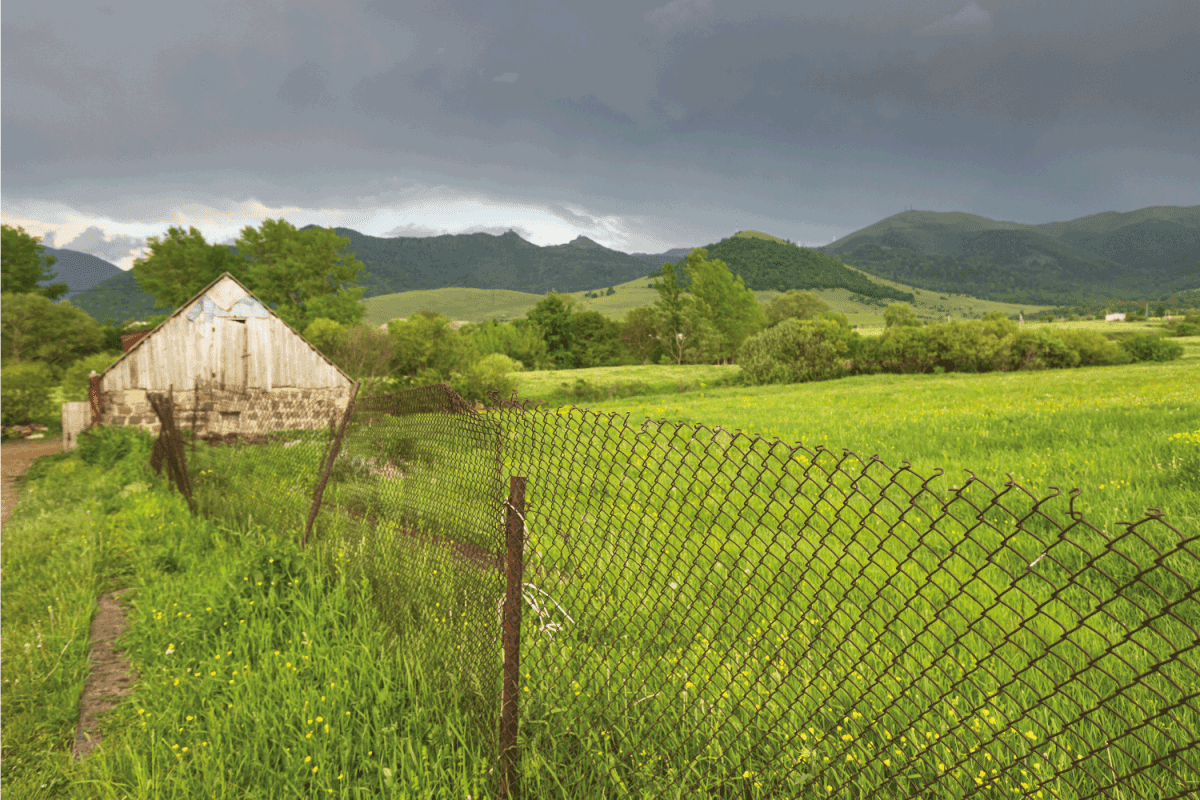A chain-link fence is known for its cost-effectiveness. It is long-lasting and durable yet affordable. As expected, this fence may require a little tweaking to retain its structure. You may notice that as time passes, the links become loose. But, how do you tighten chain-link fence? We have already researched the answer for you.
The easiest and fastest way to tighten chain link fences is by using ratchet straps, hooks, and metal rods.
- Locate the loosest part of the fence and thread the tension bar to the links until it reaches the bottom. Attach the metal rod beside the bar, then secure it with bolts.
- Insert the tie strap to the hooks of the rod and fasten it to a sturdy post or tree.
- Adjust the strap to the desired tension.
Now that you're familiar with how to tighten chain link fences, keep reading as we further explain the steps above. Aside from this, we will also be discussing related topics and cover some of the frequently asked questions regarding chain link fences.

Another Way To Tighten Chain Link Fences
Let's further explain the process of tightening chain link fences. The answer provided above is the DIY way of doing tasks. In this portion, we will be discussing a more thorough and technical approach for extra link tension.
- Take your tension bar and locate the loosest part of the fence. Typically, it is 5 feet away from the post.
- Thread it vertically in the links until one-third from the top and bottom chains.
- Secure the tension rod to the shackles or the hooks found at the top and bottom chain bar.
- Take the come-along winch and attach the chains to the free end while inserting the hook to the other end.
- Using a bolt cutter, cut all wires connecting the loose fence to the post until it is free.
- Firmly push the come-along winch towards the end post, then release. It will return to its original position.
- Repeat step 6 as needed until desired tension is achieved.
- Attach another tension bar to the post where it meets the end of the fence. Secure it with wires by wrapping it at equal intervals.
- Cut excess and loose chains.
- Unhook the winch and remove the tension bar placed in step 2.

This way of tightening chain link fences is more stable and preferred, although it is more complicated than the DIY approach. For the best result, seek the help of a professional or somebody knowledgeable about the task.
Take precautions throughout the process since you'll be dealing with sharp objects such as cutters and wires.
What Causes Your Chain Link Fence To Sag?
Now, what if your chain link fence sags? What would you do? There are a few reasons why your chain link fence is sagging. It may be due to poor installation, which is usually evident after a few weeks or months.
There is also another case when your fence stayed up for a few years but eventually started to flop or even sag. We list below the leading causes of this problem.

- Broken or stretched tension wires may be coming from the top and the bottom of the fence.
- Possible deformation of the chain-link material because of dogs or kids.
- Cracked concrete causes the posts to become loose.
- Loose posts because of the lack of concrete to anchor them to the ground.
- If the chain-link gates sag without entirely affecting the fence, it might be due to a loose hinge.
- You might have tension wire problems. These wires can either overstretch or break if it has enough wear and tear.
- If the fencing material starts to sag, you can fix it with a new tension bar.
How To Straighten A Bent Chain-Link Fence
If you have a loose post, it is a must to fix it as soon as possible to eliminate sags from your chain link. Here are the steps to fix your loose posts.

- Loosen the chain-link fabric first. The fabric is also known as mesh; it's tightly stretched the supporting beams with a fence puller and held in place with a tension bar. If the fabric does not have any damage, you can remove and replace the top rail as it will not interfere with the tension.
- You would need to unbolt the bent top rail. To loosen the hold of the rail, you would need either an adjustable wrench or a socket wrench. Loosen on both of the sides, then remove the rail.
- Insert a new top rail. A new top rail that you bought should fit into the empty brackets. To have a better result, you need to align one rail end, slide it into place, and attach the other end. Afterward, bolt the rail into its place using bracket screws and your wrench.
You can also cut the bent top rail and replace it with a new one. Loosen the wires holding down the fabric to the rail. Create markings to know where you should cut. Cut near the joints so that the new rail will be able to slide into place. Install a new top rail; you can slide the replacement into the joints.
Check out this mechanics tool kit on Amazon!
What Are The Different Types of Chain Link Fences?
Chain link fences have become increasingly popular due to their quality for securing properties; however, they do not do so much in the aesthetic appeal. It is sturdy and affordable, but some still prefer vinyl fences due to their appearance.

Manufacturers developed different kinds of chain fences to accommodate various home designs and meet the needs of homeowners.
Slatted Chain Link Fences
Privacy is almost impossible for chain link fence owners due to its design of thin wires and gaping holes. Manufacturers created a slatted chain link to solve this issue, which retains its original design but has link slat inserts to cover the holes. The slats come in a variety of colors to complement the overall appeal of your property.
Galvanized Chain Link Fences
This kind is the most popular out of all the available chain link options. The wires are coated with Zinc to protect them from any deterioration like rust. It doesn't completely prevent wear and tear signs but helps prolong the fence's useful life.
PVC & Polymer Coating
Customizable is the prominent property of this chain-link fence. It is almost the same as galvanized chain links with a protective covering, but the material differs.
Thus, it is also more expensive. Polymer offers powder coating, while PVC is vinyl. Homeowners often prefer to choose earth colors like green and brown so they will naturally blend with its surrounding.

Conclusion
Tightening a chain link can be easy if you know how to do it properly. There is a bit of mechanical labor required, but nothing too complicated. We advise you to follow safety procedures to avoid getting injured during the process.
Did you find this article helpful? Then check out some of these great articles!




